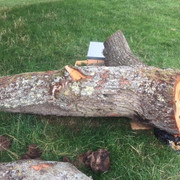- Joined
- Jun 12, 2017
- Messages
- 585
- Reaction score
- 447
- Location
- Warwickshire
- Hive Type
- National
- Number of Hives
- 150+
No.
It's not your fault you were taught rubbish.
PH
Thanks, but I've not been taught anything, just going on the experience of the past 3 years and all the hives have done fine and produced plenty of suppers etc
One thing I've noted, there are several answers to most questions so hard to get to the real information, I'll stick some extra boxes on and see what happens.
Many thanks for the info, reason I joined the thread, the Swienty BB did seem small so was looking into the Lang version, but thought might as well stick another BB on (under) and the search brought me here.
Last edited:



















































